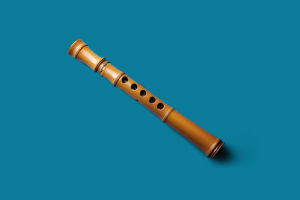Saxophones come in a variety of shapes and sizes, ranging from the extremely small and high-pitched Soprillo to the massive Contrabass.
Here’s an overview of the different types of saxophones.
Soprano Saxophones
Characteristics and challenges
Soprano saxophones are not usually recommended for beginners due to their tricky control and the precision required to master them. However, those transitioning from clarinet may find the smaller reed and control requirements familiar.
Straight or curved?
The choice between straight and curved soprano saxophones often comes down to personal preference. Both types produce beautiful tones once mastered, but the learning curve is steeper compared to larger saxophones.
Alto Saxophone
A beginner’s favorite
The alto saxophone is the default choice for many beginners. It is lightweight, less demanding in terms of airflow, and easier to handle compared to larger saxophones.
A versatile instrument
Known as a classic jazz instrument, the alto saxophone is also prominent in funk, classical chamber music, and other genres. Many musicians start with an alto, and its versatility often ensures it remains in their collection even as they explore other types.
Tenor Saxophone
A classic tone
Dear Lykkers! The tenor saxophone is renowned for its rich, smoky tone and warmth, making it the primary voice for blues, rock & roll, and swing.
Larger but approachable
Although it is bulkier and requires more airflow, a properly chosen reed and mouthpiece can make it an excellent choice for beginners and experienced players alike.
Baritone Saxophone
A specialist’s instrument
Baritone saxophones are large and imposing, often seen in ensembles rather than solo performances. Despite their size, they produce a distinctive, powerful tone that is both impressive and unique.
Famous appeal
As described by Jools Holland, the baritone saxophone creates “the sexiest sound in the world.” It demands skill and dedication but rewards players with an unforgettable experience.
Bass Saxophone
Deep tones
Pitched one octave below the tenor, the bass saxophone is larger than the baritone and produces incredibly deep, resonant tones.
Accessibility
While traditionally expensive, newer models such as the Sakkusu Bass are making the bass saxophone more affordable and accessible to musicians.
Contrabass Saxophone
A visual and auditory marvel
The contrabass saxophone, such as the Benedikt Eppelsheim Contrabass, stands taller than most people and delivers a sound an octave below the baritone. Its powerful low notes can fill an entire room.
Complexity and craftsmanship
This instrument is designed to produce warm, rich, and complex tones. Despite its size, it allows for advanced techniques such as multiphonics and altissimo, making it a prized possession for collectors and enthusiasts alike.
A must-see instrument
The contrabass saxophone is considered a marvel of craftsmanship. It’s not just a collector’s dream but also an attraction worth witnessing in person.


